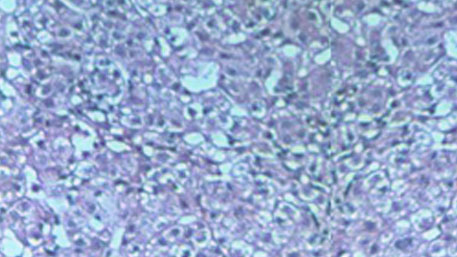 Spotlight
Spotlight
Targeted next-generation sequencing (NGS) to diagnose drug-resistant tuberculosis: a systematic review and meta-analysis
(Posted May 26, 2024 11AM)
Evolution of Gene Therapy for Inborn Errors of Immunity
(Posted May 22, 2024 2PM)
Cancer mRNA vaccines: clinical advances and future opportunities
(Posted May 20, 2024 10AM)
High-resolution African HLA resource uncovers HLA-DRB1 expression effects underlying vaccine response
(Posted May 14, 2024 3PM)
 Latest News and Publications
Latest News and Publications
Chang-Rabley Emma, et al. Vaccines 2024 0 0. (6)
Development of the second version of Global Prediction System for Epidemiological Pandemic.
Huang Jianping, et al. Fundamental research 2024 0 0. (3) 516-526
Estimating the COVID-19 prevalence from wastewater.
Mohring Jan, et al. Scientific reports 2024 0 0. (1) 14384
High-resolution short-term prediction of the COVID-19 epidemic based on spatial-temporal model modified by historical meteorological data.
Chen Bin, et al. Fundamental research 2024 0 0. (3) 527-539
Monitoring SARS-CoV-2 RNA in wastewater from a shared septic system and sub-sewershed sites to expand COVID-19 disease surveillance.
Pasha A B Tanvir, et al. Journal of water and health 2024 0 0. (6) 978-992
Nearly Instantaneous Time-Varying Reproduction Number for Contagious Diseases-a Direct Approach Based on Nonlinear Regression.
ŠaltytE Benth JuratE, et al. Journal of computational biology : a journal of computational molecular cell biology 2024 0 0.
The Human Genetic Differences in the Outcomes of mRNA Vaccination against COVID-19: A Prospective Cohort Study.
Ryu Ha-Eun, et al. Vaccines 2024 0 0. (6)
Adaptive Cellular Responses following SARS-CoV-2 Vaccination in Primary Antibody Deficiency Patients.
Gupta Sudhir, et al. Pathogens (Basel, Switzerland) 2024 0 0. (6)
Transmission Patterns of Co-Circulation of Omicron Sub-Lineages in Hong Kong SAR, China, a City with Rigorous Social Distancing Measures, in 2022.
Ning Chow et al. Viruses 2024 6 (6)
Comparing full variation profile analysis with the conventional consensus method in SARS-CoV-2 phylogeny.
Regina Nóra Fiam et al. Brief Bioinform 2024 6 (4)
More
Content Summary
Common Type
Disclaimer: Articles listed in the Public Health Knowledge Base are selected by Public Health Genomics Branch to provide current awareness of the literature and news. Inclusion in the update does not necessarily represent the views of the Centers for Disease Control and Prevention nor does it imply endorsement of the article's methods or findings. CDC and DHHS assume no responsibility for the factual accuracy of the items presented. The selection, omission, or content of items does not imply any endorsement or other position taken by CDC or DHHS. Opinion, findings and conclusions expressed by the original authors of items included in the update, or persons quoted therein, are strictly their own and are in no way meant to represent the opinion or views of CDC or DHHS. References to publications, news sources, and non-CDC Websites are provided solely for informational purposes and do not imply endorsement by CDC or DHHS.



